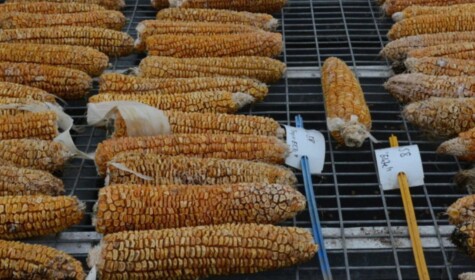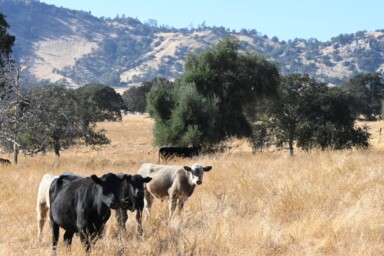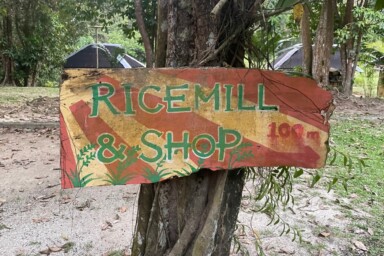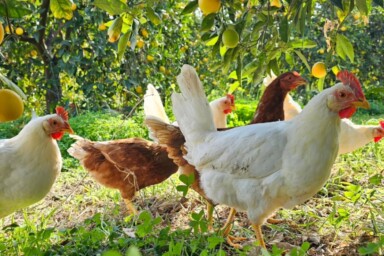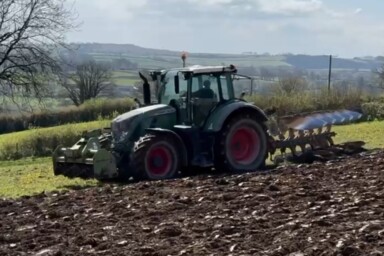Walk through the produce section of a supermarket or stroll through a farmers’ market and at first glance there seems to be an abundance of choice. Year-round, you will be able to find any vegetable or fruit you might desire. But look closer and you will see how limited the choice actually is: there will be one, maybe two varieties of carrots, you will find green courgettes, occasionally yellow ones, with a bit of luck there will be cherry, beef and plum tomatoes, but with broccoli, cauliflower, cucumbers or celery you will rarely find more than one variety. Old seed catalogues give you a glimpse of the wealth of choice that there used to be: dozens of varieties of each vegetable, different in size, colour, taste and growing time, suited to this soil and not to that soil, demanding light or shade, requiring plenty of water or content with little.
Over the decades, seed saving gardeners have maintained many of these heritage varieties but very few are commercially available. One reason is that selling such seeds isn’t very profitable – you can’t make much money with something that is widely available for free: most heritage and some modern varieties are ‘open pollinated’ so anyone is free to save the seeds for the next growing season. Contrast that with most of the varieties that you buy in a supermarket or on a farmers’ market. You could save the seeds, but even if they were to germinate, don’t expect the crop to look anything like the produce you initially bought. Most modern varieties are hybrids, which means their seeds are either sterile or the offspring are not ‘true to seed’.
Hybrid varieties have a lot of advantages for growers, consumers and seed companies. For one generation only, plants grown from hybrid seeds combine the best of both their parental lineages. Take a pepper: a breeder might select one pepper variety for sweetness and another for its ‘bruise resistant’ skin. These parent plants will be crossed and produce a hybrid which will yield very sweet peppers that transports well. Growers like hybrids because of the ‘hybrid vigour’ – this first generation (referred to as F1 seeds) will produce a crop that is likely to be bigger, better and more plentiful than its parents. Consumers have come to expect the uniformity in taste, shape and colour that hybrid varieties display and seed companies love them because farmers and growers have to buy new seeds every year.
But why is there so little choice? Why do most vegetables in supermarkets around the globe look pretty much the same? The maintenance and production of parent lines for hybrid seeds is labour intensive and costly. Seed companies such as Bayer-Monsanto or Dow Dupont will therefore produce what sells well, and compared to the quantities of soy beans and maize planted world-wide, vegetable acreages are minute. In all likelihood, growers have no option but to buy seeds from one of the big agrichemical companies. The days in which there were dozens of independent seed companies in every European country and across North America are long gone. In 2013, Cornucopia, a non-governmental organisation in the US, produced a chart that shows how many small and medium sized seed companies were taken over or bought up by big agrichemical companies between 2010 and 2013. Most of the old company names still exist, but they are owned or partially owned by one of the big conglomerates and will only stock a few varieties that can be globally sold.
Does it matter whether there are three carrot varieties or three hundred? It does, says Friedemann Ebner, until recently, head of plant breeding at Sativa, a social enterprise for organic plant breeding in Switzerland. ‘What we need is a wide genetic base’. To a plant, its genetic base is like a huge toolbox that helps it adapt to changes in weather and climate, and fight diseases and pests. Plants grown from open pollinated seeds have this genetic toolbox.
Vegetables harvested from these plants may not always be ‘best in show’ visually, but they can be enhanced by breeding and they can be regionally adapted through selection. For breeders like Ebner, it is not about going back to heritage varieties. Many of these varieties went out of fashion for a reason – the taste wasn’t great, the yields went down or they became prone to diseases. But they are an excellent starting point for improvement and adaptation through breeding. Ebner has also perfected another approach: he is breeding back hybrids, transforming them back into open pollinated, organic varieties. ‘It’s taking the best of both worlds,’ he says. The commercially important characteristics like high yield and uniformity come from the hybrid ancestry while open pollination contributes the broad genetic base which other breeders are able to use for their work – who knows which traits we may need in the future?
In 2004, Ebner started breeding back an extra sweet sweetcorn variety. At the time it was only available as a hybrid. It had the nickname ‘one day corn’, because it needed to be harvested and eaten pretty much in one day, otherwise it would taste starchy. Ten years later, Sativa had an open pollinated extra sweet sweetcorn that produces 90% of the yield of its hybrid ancestors and keeps for up to 10 days. It comes in three varieties, Damaun, Mezdi and Tramunt, ripening variously, early, at the height of and late in the season. These sweetcorns have been officially registered as new varieties. EU registration is a complicated process which protects breeders’ rights and gives growers the certainty that from the seeds they buy, they can grow what it says on the bag. The procedure disadvantages local adaptation. A vegetable will only be registered as a new variety if it is distinctly different from others, stable and uniform. And that’s where regionally well adapted seeds might easily fail: a courgette variety that does well in the UK may struggle in southern Italy and therefore fail registration.
But that’s the beauty of open pollinated seeds: every grower or gardener can save seeds from individual plants that did particularly well on their land and sow them the following year. This type of selection and local adaptation is a great tool for growers to respond to the climate crisis and work to mitigate it.
Seed breeders like Ebner stress the importance of ‘organic’ seed. So far, the genetic modification of commercially available seeds is not allowed. But conventional breeders are permitted to use techniques like radiation or CMS, a fusion technique which introduces DNA from one species (for example, through pollen) into another. Neither is allowed in organic seed breeding. (A distinction has to be made here, between ‘organically propagated’ seeds and organically ‘bred and propagated’ seeds.)
Sativa is one of the independent breeders working on the development of organic seeds. The farm and research centre are based in the very fertile upper Rhine Valley near Basel and breeders focus on varieties that thrive in a Mediterranean climate. Bingenheimer Saatgut AG in Germany is another social enterprise, exclusively breeding and trading open pollinated organic seeds across Europe. They work with seed breeders in Germany and Austria, and with Sativa and their network of growers. And here in the UK, breeders working with the Seed Co-operative develop organic, open pollinated seeds, too. The Seed Co-op is a community benefit society that sells organic seeds bred and propagated in the UK; organic seed varieties that are unavailable in Britain are sourced from Bingenheimer Saatgut and Sativa.
This growing network of breeders, growers and social enterprises has long realised the wealth inherent in open pollinated seeds. They maintain and further these seeds for agroecological farming, the production of food and food security – now and into the future. Like every living organism, plants express only a fraction of their genetic code. If there is enough water, the plant does not need to ‘switch on’ the genetic code needed to help the plant deal with drought. But seeds contain this genetic toolbox and with open pollinated seeds, breeders can access it and help the plants we need for food to adapt to the vagaries of a changing climate.
Photograph: M.Kunz
